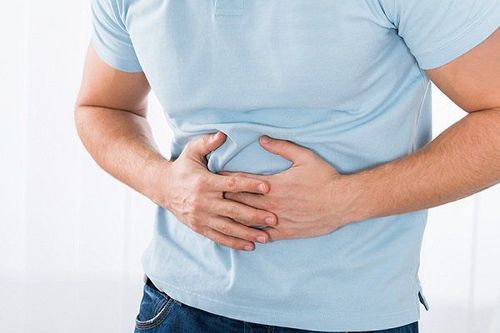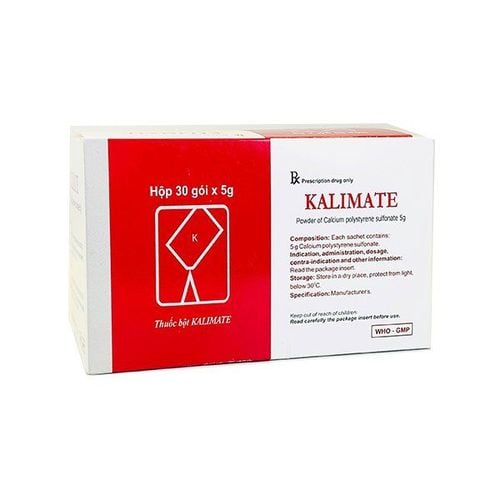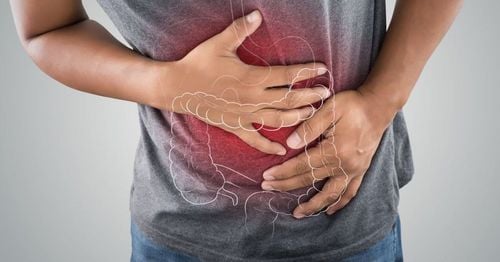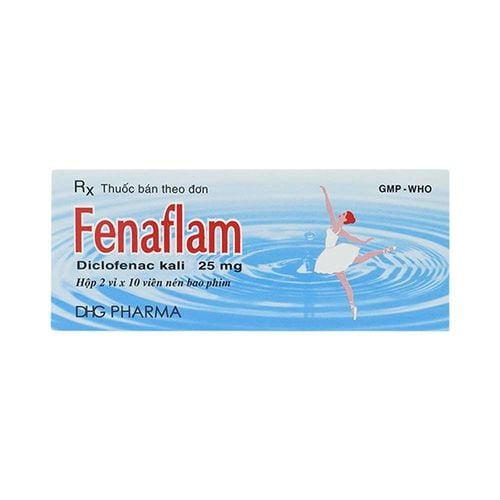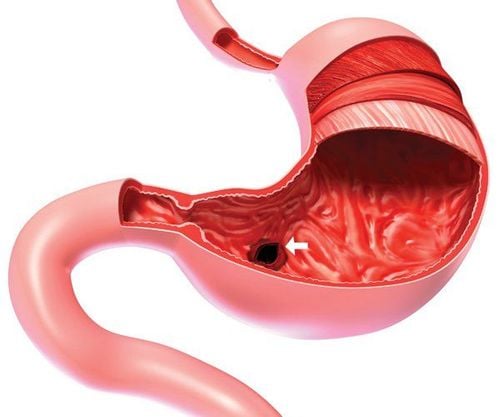This is an automatically translated article.
Posted by Master, Doctor Mai Vien Phuong - Department of Examination & Internal Medicine - Vinmec Central Park International General Hospital
Hemorrhagic ulcerative colitis is a chronic inflammatory disease causing persistent inflammation of the colonic mucosa with histopathological characteristic of granulomatous lesions. The disease affects the rectum and colon to varying degrees with each progression and remission.
1. Clinical manifestations
Hemorrhagic ulcerative colitis (CRC) is a chronic inflammatory bowel disease affecting the colon with an unclear pathogenesis. IBD is characterized by diffuse inflammatory lesions on the surface of the colonic mucosa, starting from the rectum and extending to other segments of the colon. The small intestine is usually not affected, although the terminal ileum may have superficial inflammatory lesions. Based on the extent of the colonic lesion, it can be classified into the following types: Proctitis (localized lesions in the rectum), sigmoid colitis - rectum or left colon (spread to the splenic angle). ) or diffuse/global colitis. The extent of damage is not only related to severity but also affects money and choice of treatment. Symptoms and course of the disease are related to the extent and severity of inflammatory lesions.
To learn more about the extent of the disease, the symptoms of bleeding ulcerative colitis, please refer to the article below.
MORE: How is ulcerative colitis discovered?
2. Gastrointestinal manifestations of ulcerative colitis with bleeding
2.1. Ulcerative colitis
Ulcerative proctitis is defined as localized inflammation in the rectum and is the mildest form of spread, accounting for 25-30% of cases at the time of diagnosis.Patients often have bloody stools, a feeling of needing to defecate or sometimes symptoms of constipation due to slow stool movement in the right colon. Systemic symptoms are rare, but concomitant skin or joint involvement may be seen. Approximately 30-40% of patients with ulcerative proctitis then progress to other segments of the colon.
2.2. Ulcerative colitis - sigmoid colon
Ulcerative sigmoid colitis - also known as left-sided colitis occurs in 40% of cases.Patients may have alternating symptoms of constipation and diarrhea accompanied by abdominal pain, nausea, and bloody stools. Left iliac fossa colic and extra-gastrointestinal symptoms were more common than those with ulcerative proctitis alone.
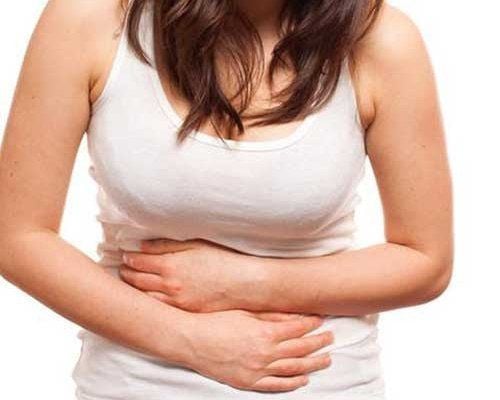
2.3. Ulcerative colitis of the whole colon
Ulcerative colitis is diagnosed when the inflammatory lesion spreads to the transverse colon or the right colon. Patients often present with diarrhea, bloody stools, painful defecation, abdominal fullness, abdominal cramps or localized. In addition, patients in this group often lose weight, systemic symptoms outside the gastrointestinal tract and anemia.
>> See more: Efficacy of Thiopurine monotherapy in ulcerative colitis - Post by Master, Doctor Mai Vien Phuong - Department of Medical Examination & Internal Medicine - Vinmec Central Park International General Hospital
2.4. Toxic megacolon
Toxic megacolon is the most severe complication of ulcerative colitis when the inflammatory lesion spreads from the superficial mucosa to the submucosal and muscular layers. This complication often occurs in patients with disseminated colitis or severe colitis. Clinical manifestations include fever, exhaustion, severe abdominal cramps, abdominal distention, and local or total abdominal pain.
3. Assess the degree of disease
The severity of clinical symptoms depends on the length of the colonic lesion and the degree of inflammation. Traditional or improved Truelove and Witts criteria can be used to assess severity of clinical symptoms and improvement after treatment.
Patients were assessed as moderate when the criteria were between mild and severe with the fulminant criteria added to the improved classification. Most patients will have moderate manifestations and the likelihood of relapse after achieving remission can be up to 90% if not monitored and maintained.
Mild is defined as when the patient defecates <4 times/day, the severity of abdominal pain and immediate urge to defecate is minimal. Most of the bowel movements occurred early in the morning and the patient had no significant impact on quality of life. Moderate was defined as the patient defecating four to eight times a day, usually in the morning and after meals, associated with an immediate urge to defecate. Passing blood, mucus or patients having to wake up in the middle of the night to defecate is common. The disease can affect the patient's work and life. Severity is defined as when the patient has more than 8 bowel movements per day, or nocturnal defecation, always feels the need to defecate, may have impaired bowel control, and has systemic symptoms such as: low fever, night sweats, fatigue, weight loss. Abdominal distension, tachycardia, anemia, leukocytosis, and hypoalbuminemia are common. The improved Truelove and Witts classification added fulminant severity when the patient had more than 10 bowel movements/day, had bowel movements during the night, severe abdominal pain, abdominal distension, high fever, exhaustion, and even hypotension. . Imaging studies may show mucosal edema, colon dilatation (toxic megacolon) or perforation.
4. History taking and clinical examination in bleeding ulcerative colitis
History taking should include recent travel history, potential for new infections, use of medications (especially antibiotics and NSAIDs), smoking, family history of IBD or autoimmune diseases (psoriasis, eczema, arthritis, autoimmune liver disease, scleroderma), polyps, colon cancer. .. All of this information helps assess risk factors and possible long-term complications. Besides exploring the severity of the symptoms of bloody stools and diarrhea, it is necessary to explore other symptoms to help assess the severity of the disease, including: Nocturnal defecation, fecal incontinence, fever, weight loss and gastrointestinal symptoms such as arthritis, back pain, skin lesions, eye inflammation, mouth ulcers. On clinical examination, especially abdominal examination, abdominal distension can be seen. In fulminant cases or toxic dilatation of the colon, a bowel movement may no longer be visible. Attention should be paid to examination for signs of perianal disease to rule out Crohn's. Patients may have symptoms of anemia and extra-gastrointestinal symptoms such as uveitis, erythema nodosum, skin gangrene, arthritis, back pain but not much limitation of movement, hepatomegaly , splenomegaly... So far, there is no specific medicine to completely cure ulcerative colitis bleeding. Only treatment can help limit the disease, reduce pain for the patient. Therefore, in addition to the treatment prescribed by the doctor, the patient needs to follow a good diet for the digestive system, avoid stress and need to have regular health checkups.
As soon as there are symptoms, it is necessary to go to the doctor soon for timely treatment when the damage has not spread. Vinmec International General Hospital with a team of highly qualified doctors, along with modern medical equipment and international standards, readers can trust to choose as a destination for examination and treatment. for yourself and your family.
Please dial HOTLINE for more information or register for an appointment HERE. Download MyVinmec app to make appointments faster and to manage your bookings easily.
The article references the source: NagreF, Gionchetti PR, Eliakim R. et al. (2017). Third European Evidence-based consensus on Diagnosis and Management of Ulcerative Colitis, De Dombal F.T. (1968), Ulcerative colitis: definition, historical background, aetiology, diagnosis, naturel history and local complications, Postgrad Med, Lichtenstein G.R., btv. (2014), Medical Therapy of Ulcerative Colitis, Springer-Verlag, New York.




